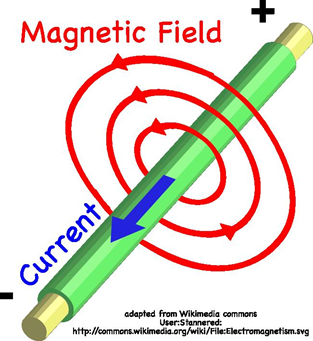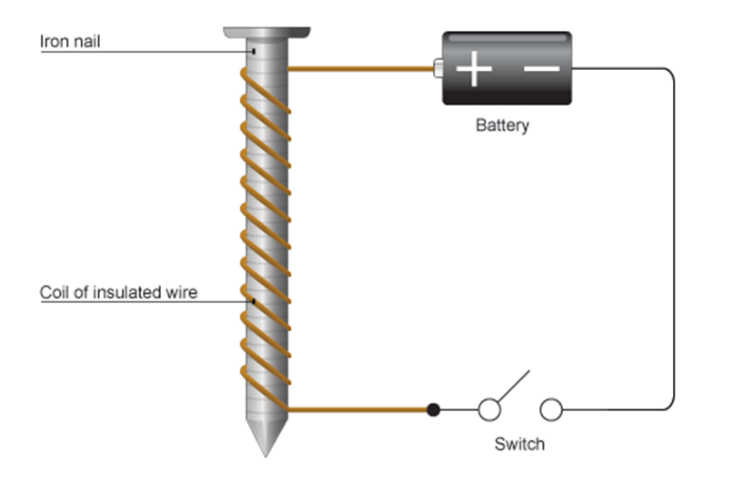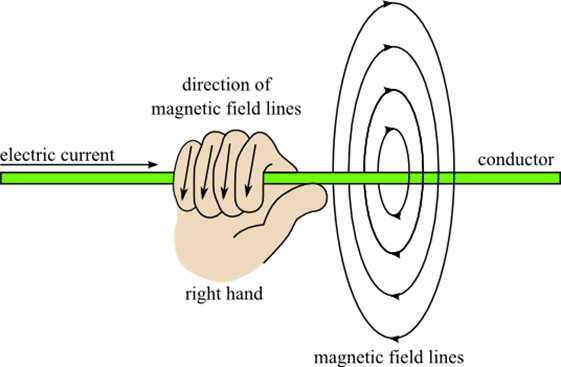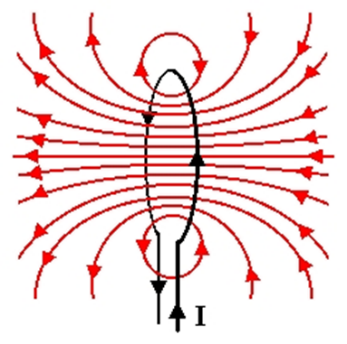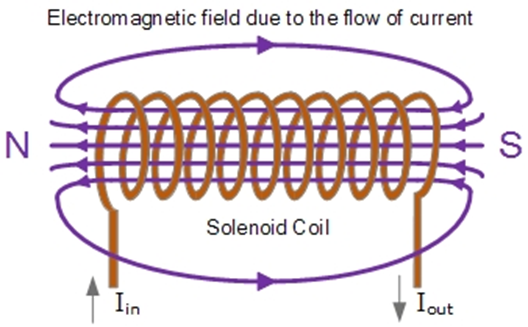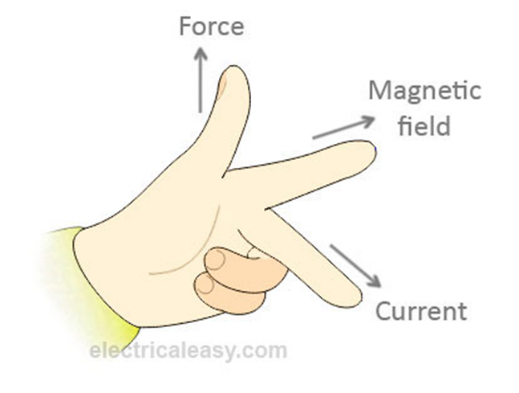6.08 know that an electric current in a conductor produces a magnetic field around it
|
A current travelling along a wire produces a circular magnetic field around the wire. The magnetic field direction can be determined using the right hand grip rule. |
